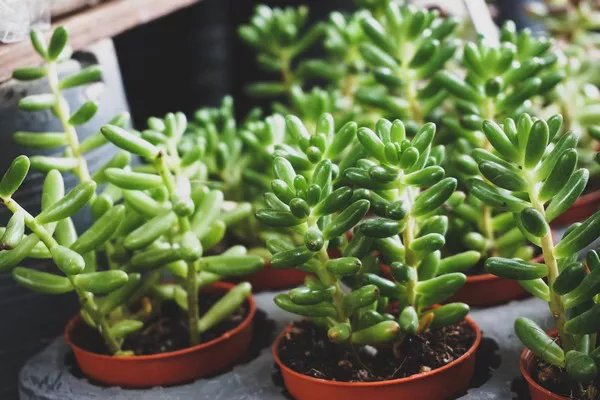Succulents have gained immense popularity in recent years due to their unique beauty and low maintenance requirements. However, their slow growth can sometimes be a source of frustration for plant enthusiasts. If you’re looking to expedite the growth of your succulents, this comprehensive guide is here to help. We will explore various methods and closely related topics to provide you with practical tips on how to make your succulents grow faster, ensuring a thriving and lush collection.
1. Understanding Succulent Growth
Before delving into the techniques to speed up succulent growth, it’s important to understand their natural growth patterns. Succulents are adapted to arid environments and have evolved to store water in their leaves, stems, or roots. As a result, they typically grow at a slower pace compared to other types of plants. Succulents prioritize energy conservation over rapid growth, which allows them to withstand prolonged periods of drought.
2. Factors Influencing Succulent Growth
Several key factors influence the growth rate of succulents. Understanding and optimizing these factors will contribute to faster and healthier growth. Here are the most crucial factors:
Light: Succulents require ample sunlight to thrive. Place them in a location that receives at least 6 hours of direct or indirect sunlight per day. Inadequate light can cause elongated and etiolated growth, while intense sunlight can scorch the leaves. Find the right balance for optimal growth.
Temperature: Succulents prefer moderate temperatures between 60°F and 75°F (15°C to 24°C). Warmer temperatures can accelerate growth, but ensure adequate ventilation to prevent overheating. Avoid exposing succulents to extreme cold, as it can hinder growth or cause damage.
Watering: Succulents have low water requirements and are susceptible to overwatering. Providing the right amount of water is crucial for faster growth. Allow the soil to dry out completely between waterings, and water deeply but infrequently. Find the balance between hydration and drought stress to promote healthy growth.
Soil and Fertilization: Well-draining soil is essential for succulent growth. Use a commercial succulent or cactus potting mix, or create a mixture combining regular potting soil with perlite or coarse sand. Fertilize sparingly during the growing season with a diluted, balanced succulent fertilizer to provide essential nutrients.
Pot Size: Succulents generally prefer slightly cramped conditions. Planting them in pots that are proportionate to their size promotes faster growth. Avoid using excessively large containers, as they can retain excess moisture, leading to root rot.
3. Techniques to Promote Faster Succulent Growth
While succulents naturally have a slower growth rate, certain techniques can help boost their development. Implementing these strategies can encourage faster growth and more abundant foliage:
Optimal Light Exposure: Ensure your succulents receive sufficient light by placing them in a location with adequate sunlight. If you have limited natural light indoors, consider using grow lights that provide the appropriate spectrum and intensity for succulents.
Proper Watering Regimen: Fine-tune your watering schedule to provide the right amount of moisture for accelerated growth. Monitor the soil moisture level and water deeply but infrequently, allowing the soil to dry out before watering again. Avoid leaving the roots constantly wet, as it can lead to root rot.
Seasonal Adjustments: Succulents have different growth patterns throughout the year. During the active growing season, typically in spring and summer, increase watering frequency and provide additional nutrients. In the dormant season, usually fall and winter, reduce watering and fertilization to match the plant’s slowed growth.
Pruning and Pinching: Regular pruning or pinching back of succulents can promote bushier growth. Remove leggy or elongated stems to redirect energy towards new growth. Pinching off the tips of the stems can stimulate branching, resulting in a fuller appearance.
Propagating: Propagating succulents by taking cuttings or dividing offsets not only expands your collection but also stimulates growth in the parent plant. The act of propagation triggers the plant’s natural response to produce new growth, resulting in faster overall growth.
Optimal Nutrient Levels: While succulents are generally low-maintenance when it comes to fertilization, providing a balanced succulent fertilizer during the active growing season can help accelerate growth. Follow the package instructions for proper dilution and frequency to avoid over-fertilization, which can be harmful to succulents.
4. Patience and Observance
While these techniques can contribute to faster succulent growth, it’s important to remember that succulents still grow at a slower pace compared to other plants. Patience is key when it comes to nurturing and enjoying the beauty of succulents. Monitor your plants closely, observe their response to different environmental factors and adjust accordingly. By understanding the unique needs of your succulents, you can provide them with the optimal conditions for accelerated growth.
Conclusion
While succulents naturally have a slower growth rate, implementing certain techniques and optimizing environmental factors can help expedite their development. By providing adequate light, optimizing watering practices, and employing other growth-promoting strategies, you can encourage faster growth and enjoy a flourishing succulent collection. Remember to observe your plants closely, as each succulent may have specific growth requirements. With time, patience, and proper care, you can create an environment that fosters faster succulent growth and revel in the beauty of these fascinating plants.


